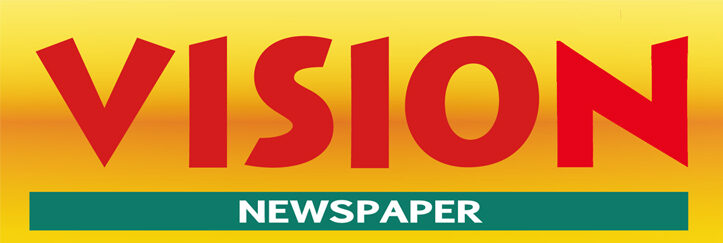Hands up gesture animates Ferguson protests on NFL football field, workplaces and classrooms
By Jim Salter And Jim Suhr
THE ASSOCIATED PRESS

ST. LOUIS _ Five St. Louis Rams players entered the football field with their hands raised. A day later, people walked out of work or school showing the same gesture of solidarity with Ferguson protesters.
The pose has come to symbolize a movement, even though witnesses offered conflicting accounts of whether 18-year-old Michael Brown had his hands up in surrender when he was killed by Ferguson officer Darren Wilson in August.
The power of the symbol was evident again Monday. Protesters across the country walked off the job or away from class in support of the Ferguson protesters. Walkouts took place in New York, Chicago, San Francisco and elsewhere.
At the University of Missouri-St. Louis, not far from Ferguson, sophomore Amber Whitaker was among about 30 students who chanted “Hands up. Don’t shoot!”
Whitaker, who is white, said the symbolism is what matters, not whether Brown literally had his hands in the air.
“There are black men and women who are shot with their hands up,” Whitaker said. “There are black men and women who are shot unarmed. It may not apply exactly to Mike Brown, but it still happens.”
The exact circumstances surrounding Brown’s death will forever be in dispute. Wilson, who is white, shot and killed Brown, who was black and unarmed, on Aug. 9. A grand jury’s decision last week not to indict Wilson set off renewed protests, some of which turned violent.
Wilson told the grand jury that he shot Brown in self-defence. But several witnesses said Brown had his hands up in surrender. Within hours, “Hands Up. Don’t Shoot!” became the rallying cry for protesters.
Witness accounts contained in thousands of pages of grand jury documents reviewed by The Associated Press showed many variations about whether Brown’s hands were actually raised _ and if so, how high.
Some people were offended by the hands-up gesture.
The St. Louis Police Officers Association said the display by Rams players Tavon Austin, Kenny Britt, Stedman Bailey, Jared Cook and Chris Givens was “tasteless, offensive and inflammatory.”
The group, joined by the St. Louis County Police Association, met with Rams leaders Monday. Rams coach Jeff Fisher said during a news conference Monday that neither the team nor the NFL will discipline the five players for the gesture.
Fisher said it was his players’ “choice to exercise their free speech” and that he would not comment further on their actions. He did say he plans to talk with the players, who are all black, but those conversations will remain confidential.
The NFL issued a one-sentence statement from spokesman Brian McCarthy: “We respect and understand the concerns of all individuals who have expressed views on this tragic situation.”
In Springfield, Missouri, Rodney Shetler, watched the players’ action from his home. He said the move was “in pretty poor taste” and was divisive and disrespectful to law enforcement.
“It’s a gesture proven by the grand jury not to be appropriate or accurate,” said Shetler, the 44-year-old owner of a copying and printing business.
A similar episode unfolded more than four decades ago at the 1968 Olympics in Mexico City.
John Carlos, the American 200-meter bronze medallist , set off a political firestorm on the medal stand when he and teammate Tommie Smith gave the black power salute. He stood by the Rams players.
“If they choose to come out and raise their hands in support of whatever their emotions are, they have the right to do that,” Carlos told The Associated Press. “I don’t think the whole story has been told about the Michael Brown tragedy, and the pros and cons on both sides. They can just go by their emotions. I don’t think anyone got injured or shot by expressing emotions.”
The White House on Monday announced the conclusion of a three-month review of the Ferguson situation. President Barack Obama wants more officers to wear cameras to promote trust, but he is not seeking to reduce federal programs that provide the type of military-style equipment used to dispel the unrest in Ferguson and elsewhere.
Brown’s family wants to see every police officer working the streets wearing a body camera.
Also Monday, the Ferguson Commission appointed by Missouri Gov. Jay Nixon met for the first time. The 16-person panel will study the underlying social and economic conditions _ from failing schools to high unemployment_ that have gained attention since Brown’s death.
About 80 residents attended the group’s first session, a five-hour meeting devoted primarily to organizational issues.
As the meeting lingered, several audience members ran out of patience, angrily imploring commission members to discuss practical solutions, not murky goals and vision statements.
“People have waited for three months stewing in anxiety and pain,” activist Charles Wade told the panel.
The panel includes a Ferguson construction-supply company owner, two pastors, a university professor, a community activist and a St. Louis police detective who is also president of the state chapter of the Fraternal Order of Police. Two of the 16 members were in Washington meeting with Obama.
Nixon dropped plans Monday for a special legislative session to approve additional spending for the state’s public-safety response to protesters in the St. Louis area. The governor reversed course after lawmakers said he could tap into an existing budget for the State Emergency Management Agency to cover the costs of the National Guard and Missouri State Highway Patrol.
___
Contributors include Alan Scher Zagier in Ferguson, David A. Lieb in Jefferson City, Missouri, Joe Harris in St. Louis and Eddie Pells in Denver.
